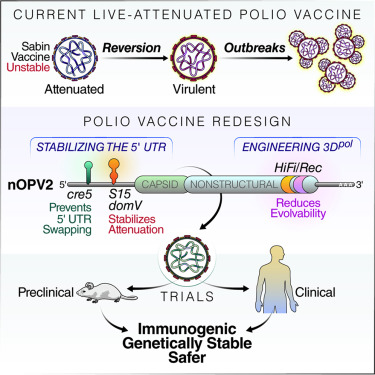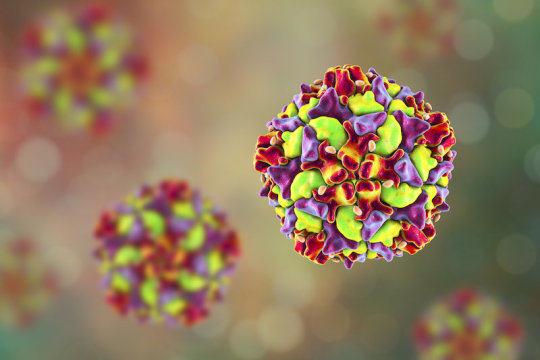For the first time in 50 years, a new oral polio vaccine has been designed by the researchers at Gates Foundation, the Center for Vaccine Innovation and Access in Seattle, and the Centre for the Evaluation of Vaccination at the University of Antwerp. According to the study published in the journal Cell Host and Microbe, the new designer polio vaccine is incapable of evolving to cause disease in humans.
Currently, there are two vaccines available to protect against polio, live-attenuated oral polio vaccine (OPV) and inactivated poliovirus vaccine (IPV). OPV is cheaper than IPV and is more effective in preventing transmission of wild viruses by providing herd immunity. OPV is the primary strategy used in global eradication programs.

Afghanistan, Pakistan, and Nigeria – Last polio-endemic regions
The Global Polio Eradication Initiative (GPEI) began in 1988 with a goal to eradicate polio worldwide. Led by the World Health Organization (WHO), The Rotary Foundation, UNICEF, CDC, and the Gates Foundation, they have managed to vaccinate over 3 billion children worldwide and reduce the number of cases by 99 percent.
The need for a new oral vaccine seems to arise due to the recent outbreaks of circulating vaccine-derived polioviruses (cVDPVs) cases in over 21 countries worldwide. This is due to the ability of the OPV to mutate into a strain that can cause paralysis and spread among communities with low vaccine coverage.
Up till 2015, over 90% of cVDPV cases were due to the Type 2 poliovirus strain present in trivalent OPV. Since the switch in 2016 to bivalent OPV containing only Type 1 and Type 3 poliovirus, there has been a reduction in the risk of cases of cVDPV due to type 2.
Phase 1 clinical trial complete
By stabilizing the region of the viral genome that is required for it to evolve into a disease-causing strain, the researchers were able to engineer a safe and immunogenic poliovirus vaccine strain, nOPV2.

15 adults were recruited for the phase 1 trial conducted at the University of Antwerp. All had previously been vaccinated with an inactive vaccine to ensure they could not be made sick by the new live vaccine. The trial found nOPV2 to be more stable and more effective than the old vaccine. The designer vaccine caused the participants to generate antibodies against the virus, and the viral particles in their stool were not seen to infect or cause paralysis in mice. However, over 90 percent of the mice exposed to viral particles from the stool of people vaccinated with the old OPV, were seen to develop paralysis.
A phase 2 trial is currently underway and the WHO is planning for emergency approval of the vaccine to contain these outbreaks in regions with active polio transmission.
References:
Yeh et al., Engineering the Live-Attenuated Polio Vaccine to Prevent Reversion to Virulence, Cell Host & Microbe (2020), https://doi.org/10.1016/j.chom.2020.04.003
Polio Global Eradication Initiative (2020). This Week. http://polioeradication. org/polio-today/polio-now/this-week/.




